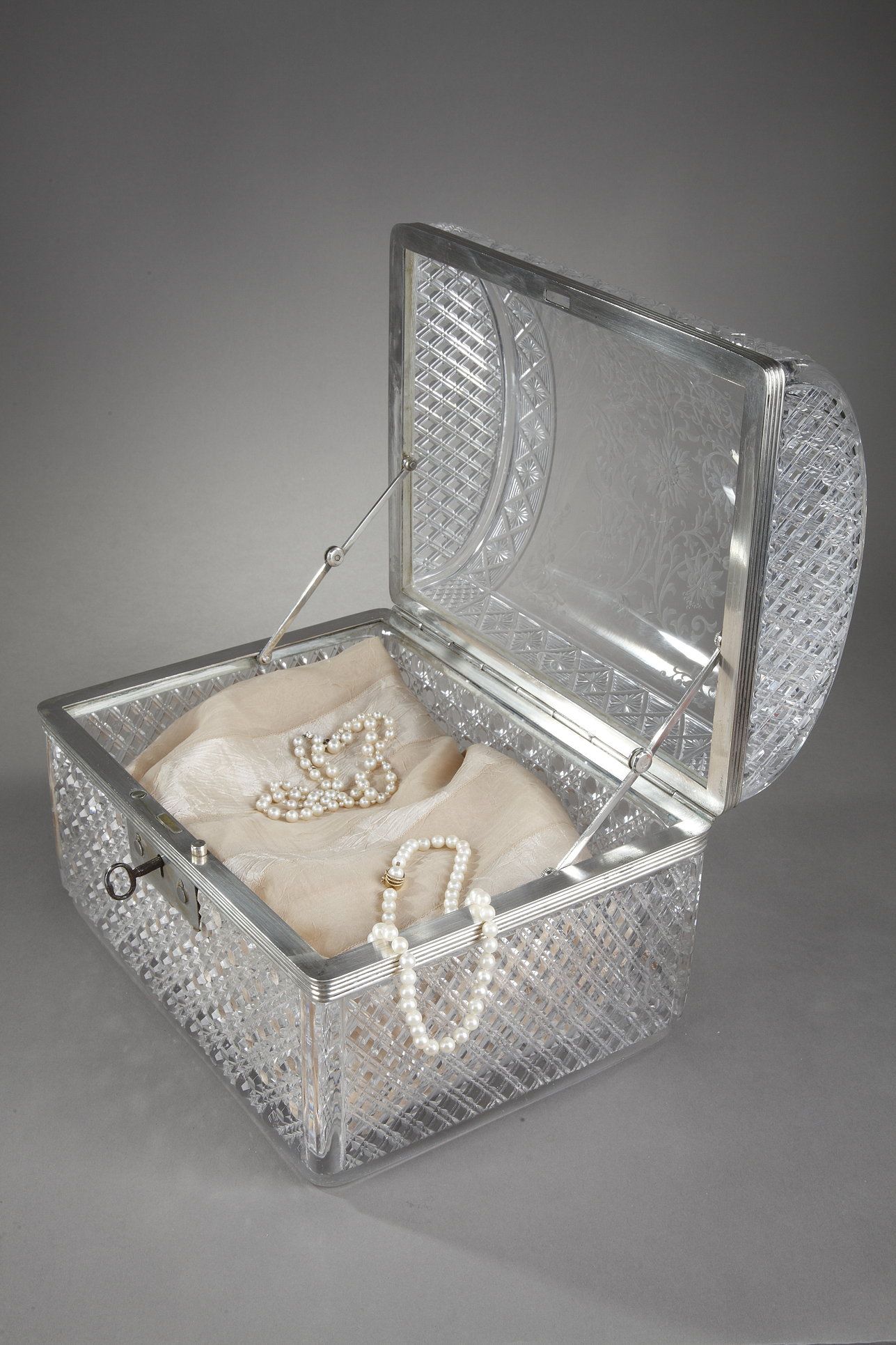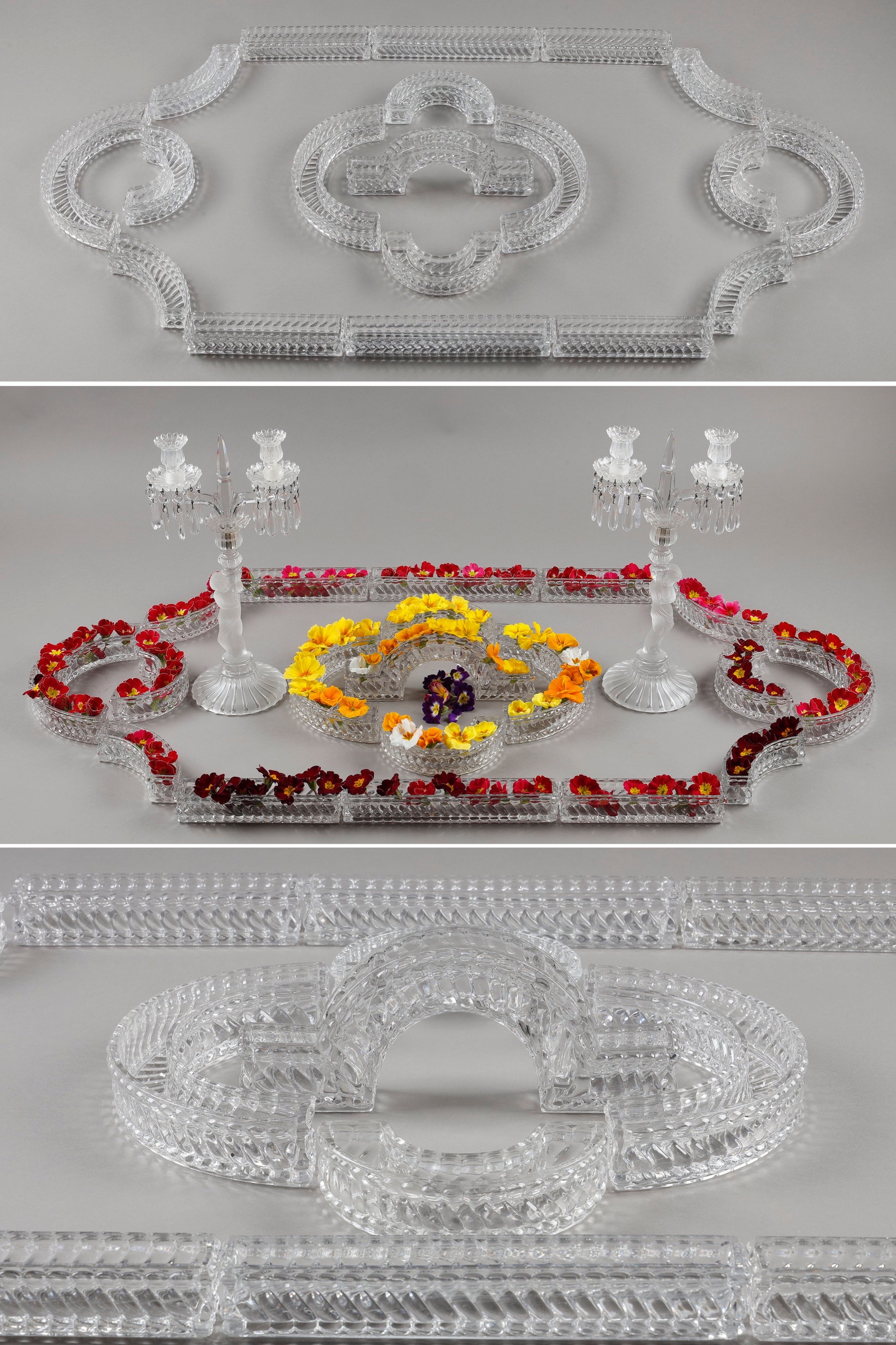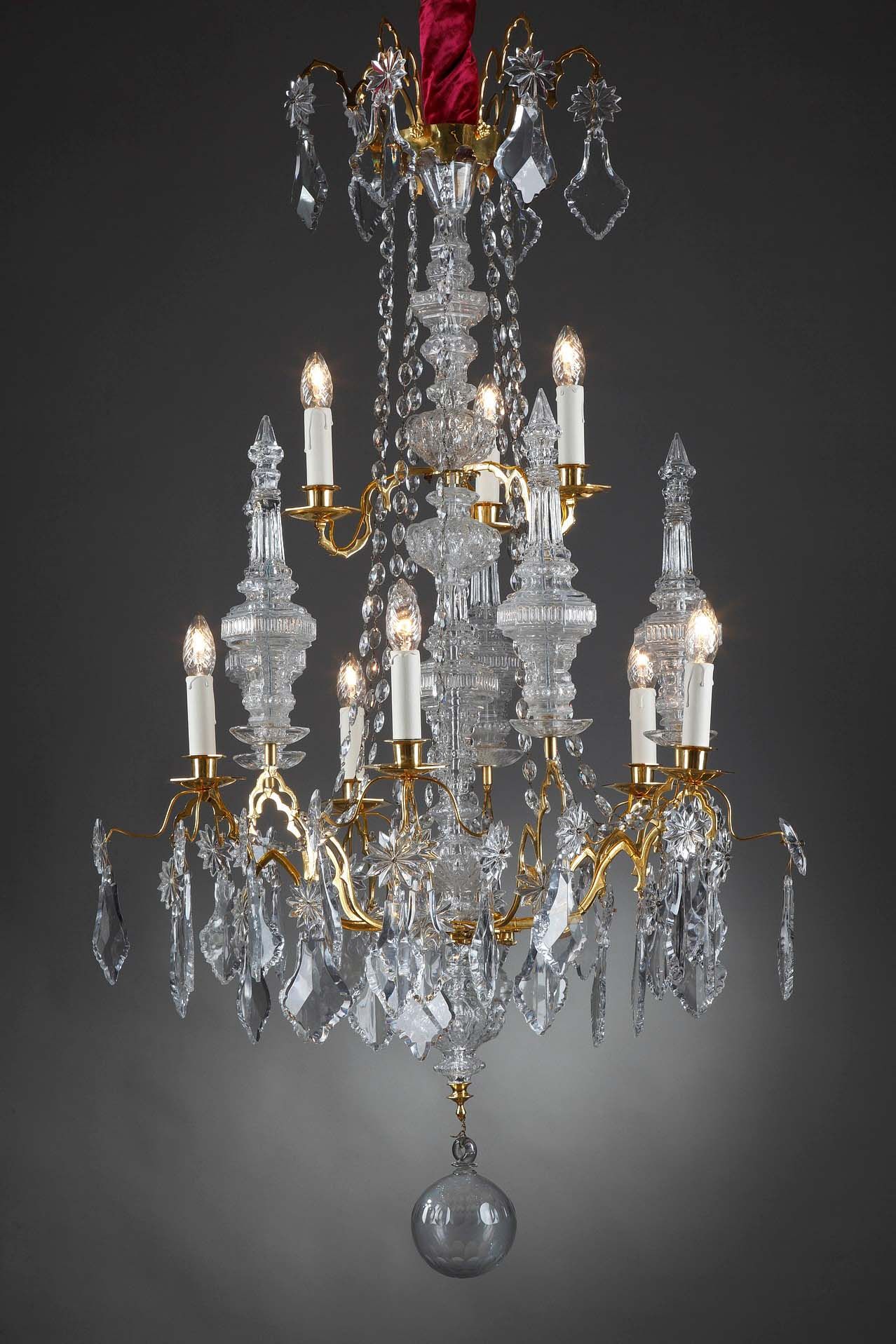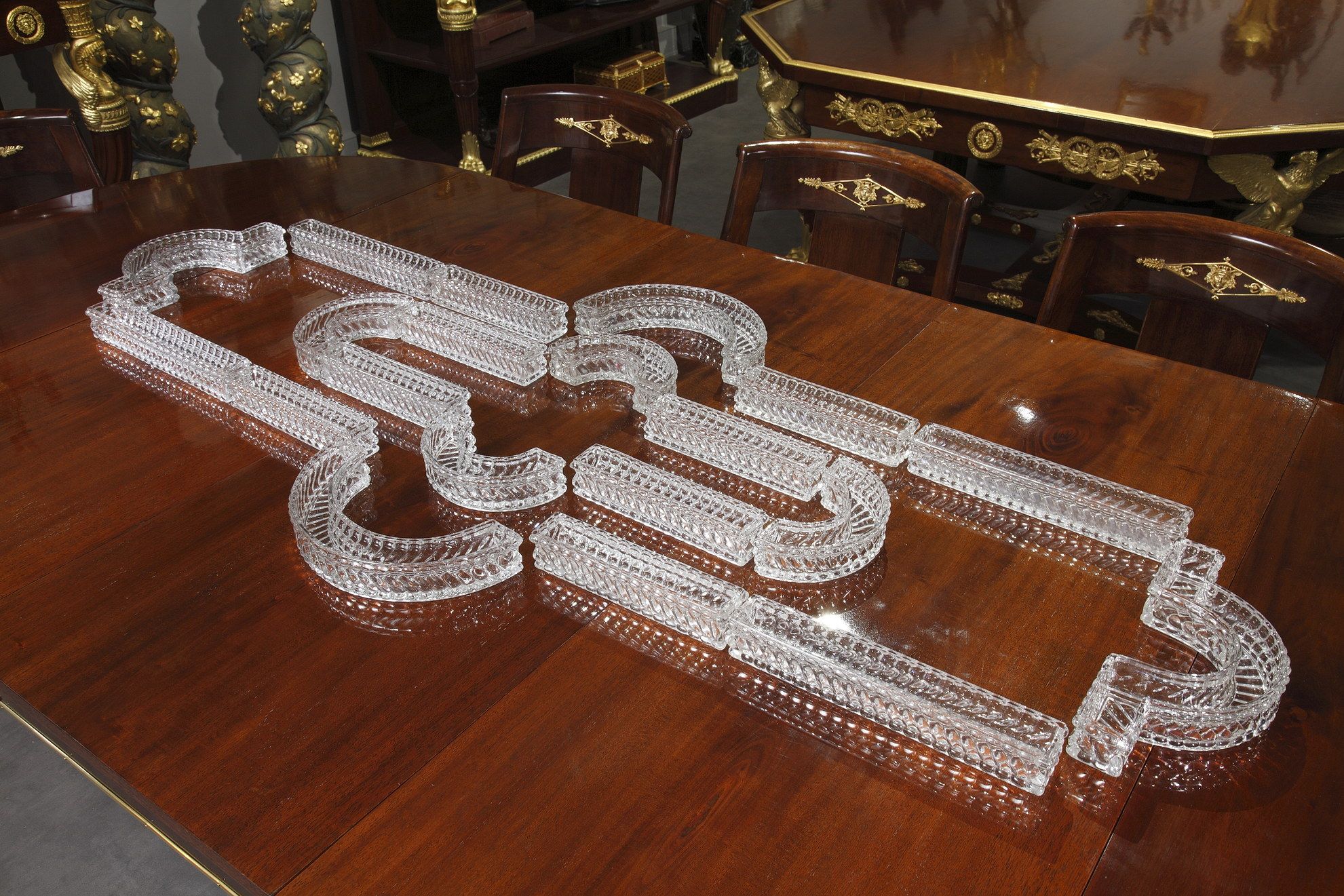The brilliance of Baccarat crystal
29.07.22
Crystal is a staple on festive tables, often in the form of champagne coupes. However, this precious material can be used in countless ways. The Baccarat company , considered the benchmark for crystal in Europe, is a prime example. Let's revisit the history of this Lorraine-based manufacturer and the excellence of its French craftsmanship.
THE ORIGINS OF BACCARAT CRYSTAL
"France lacks art glass and that is why products from Bohemia enter in such large quantities, resulting in an astonishing export of money, at a time when the kingdom was in such great need of it," such was the observation of Louis Joseph de Montmorency-Laval , Bishop of Metz, in 1764. To remedy this, he asked King Louis XV for permission to establish a glassworks in Baccarat in Lorraine.
The region's silica-rich soils are ideal for glass production. The abundance of forests provides fuel for the factory furnaces, which operate around the clock. To allow workers to be present during the glassmaking process, over 70 families are housed within the glassworks itself.
It was only after the factories were acquired by the industrialist Aimé-Gabriel d'Artigues that the company began producing the crystal for which it is now renowned. Owner of the glassworks and crystal factories of Vonêche in Belgium, he decided to establish a presence in France following treaties in 1815 that complicated imports due to increased customs duties. The transformation of Baccarat into a crystal factory was a resounding success, and by 1817, the factories employed 300 workers.
GLASS OR CRYSTAL?
Thus, the Baccarat company abandoned glassmaking to become a crystal manufacturer . While the techniques were similar, the results were quite different. Do you know the difference between glass and crystal?
Originally, the term crystal, from the Greek word krustallos meaning "piece of ice," referred to rock crystal , a clear quartz, which forms through water seeping deep into granite rocks. Its transparency fascinated collectors who incorporated it into their cabinets of curiosities. From the 14th century onward, the term was also used to describe particularly transparent materials.
The use of glass was already widespread in European courts, but it was crystal that stood out under this new designation. Both materials are made from silica, but what differentiates them is the amount of lead in their composition. Crystal traditionally contains between 10 and 32% lead oxide. In Europe, the term is protected by the European Economic Community of 1971, which stipulates that only objects containing more than 24% lead oxide and possessing a refractive index equal to or greater than 1.545 are considered crystal.
A difference in quality between the two materials is then observed. Crystal differs from glass in its light refraction , density, and hardness. The higher its lead oxide concentration, the more transparent and polishable the crystal will be, which explains its brilliance. Furthermore, a glass object will be lighter than a similar crystal object. It is denser and therefore stronger, contrary to popular belief. This allows for finer work in cutting and engraving without the risk of breaking the piece.
 Detail of an engraving on a crystal decanter, circa 1900
Detail of an engraving on a crystal decanter, circa 1900
But the most recognizable element for crystal enthusiasts is the clear, ringing sound it produces. This crystalline sound is one of the first characteristics that comes to mind. It depends on the shape, size, and quality of the glassmaker's work. Thus, an assortment of mismatched glasses can create a beautiful melody for your toasts.
BACCARAT INNOVATIVE HOUSE
Throughout its development, the Baccarat crystalworks has always been at the forefront of innovation to attract its clientele. In 1824, one of its workers, Ismaël Robinet, invented the piston-driven air pump . This first mechanical blowing process allowed glassmakers to conserve their breath. The technique was subsequently adopted by all other French glassworks. This discovery made it possible, as early as 1830, to adapt the pressed-molded , already used in the United Kingdom and the United States, allowing the crystal parison to be applied to the mold in a single pour. In this way, pieces of specific shapes could be obtained much more quickly.
 Detail of a putto in satin-finish crystal, Baccarat crystal chandelier
Detail of a putto in satin-finish crystal, Baccarat crystal chandelier
cut crystal glasses , known as the "rich cut," were produced for a wealthy clientele. Facets were created to emphasize the interplay of light and the purity of the forms. During the Restoration period, diamond-point decorations were used to highlight the material's luminosity. This technique was sometimes combined with glass engraving, which enjoyed great success. Difficult to master, it required considerable skill, leading to the concept of "glass artists," whose pieces, such as those of the engraver Simon, were particularly sought after.
Eight-light crystal cage chandelier, 19th century
crystal chandelier elements the National Exhibition of French Industrial Products in 1827. On this occasion, they showcased a whole range of pieces designed to adorn bronze chandeliers and play with the flickering candle flames. These included pendants, chains of octagons, faceted beads, and dagger motifs, which would enjoy great popularity throughout the 19th century. For these creations, the company partnered with renowned figures such as the bronze sculptor Pierre-Philippe Thomire electrified chandelier models with hollow crystal arms that concealed the wiring.
BACCARAT, EXCEPTIONAL WORK
 Baccarat cut crystal jewelry box
Baccarat cut crystal jewelry box
The genius of the House of Baccarat stems from its commitment to meeting the growing demand for glassware among the
bourgeoisie . At the beginning of the 19th century, the favorable socio-economic climate led this new social class to invent the concept of conviviality . Prosperous, they gathered for dinners and balls, and every household sought to acquire luxury items to affirm its status. Crystal graced every table in the form of glasses , ewers , and candelabras , but also in more intimate spaces as jewelry boxes , sweetmeat dishes , or reproductions of 16th- and 17th-century rock crystal objects displayed at the Louvre. Thus, crystal, and Baccarat in particular, established itself as the epitome of luxury in all aspects of bourgeois life.
The exceptional finesse and brilliance of Baccarat pieces have led to success far beyond France's borders. Known as "the crystal of kings," Baccarat has been a favorite of royal courts worldwide since the early 20th century. After a visit to Paris in 1900, Tsar Nicholas III of Russia placed large orders with the factory. Legend has it that the sovereign would throw his crystal glasses over his shoulder after emptying them. He wanted to demonstrate his country's wealth by spending lavishly on these exceptional pieces. To supply him, one of the three furnaces in operation at the Baccarat factory was dedicated exclusively to the Russian court. Another striking example: in the 1930s, the Maharaja of Gwalior acquired an imposing crystal chandelier for the oriental hall of his palace; it was so heavy that the ceiling collapsed upon its installation. This did not discourage the patron, who had it rebuilt more sturdily, even going so far as to suspend an elephant to ensure that a new Baccarat chandelier could be installed. Even today, governments still procure crystal services from the company.
CONCLUSION
Crystal iconic, a symbol of luxury and sophistication. With a history spanning over 250 years, Baccarat crystalworks has, through its expertise and creativity, helped make it an essential element of décor. Whether in candelabras or tableware, you can't go wrong by adding a piece of crystal to your home; its brilliance will illuminate your interior.
Discover our collections of crystal objects
Bibliography
- Baccarat: The Legend of Crystal , Petit Palais Museum, Paris-Musée, 2014
- Baccarat , Dany Saut, 1998




